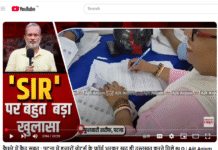Mathura-based Navjyoti Press was established in 1971 by Shailendra Maheshwari. He bought two manual printing presses back in 1971. “The printing scenario back in those days was quite ripe then. A lot of printing presses were coming up. The competition was healthy as well. No one was involved in cheap printing tactics. This resulted in an increase in demand and the margins were healthy. During the 90s, printing in Mathura was at its peak. There was also unity and solidarity among the printers. There was good demand and the charges remained the same throughout the time period. We started receiving projects from the government and that could be called the standout time for printing in Mathura. Almost every printer was earning huge profits at that time,” says Maheshwari.
In the days to come, as competition grew, banks started financing the printers. This propelled many to set up their own printing units, thus resulting in an increase in the number of printing units. With more number of printing units and stagnant demand, the competition grew and the hunt to gain more customers increased. Printers started offering jobs at cheaper rates and hence the margins squeezed.
Navjyoti owns an Akiyama printing press along with a Solna, both of which were bought in the late 2000s. The company prints text books for state governments of Rajasthan, Madhya Pradesh and Uttar Pradesh. The company even ventured into the publishing business in 2001 for a short period. “After 4-5 years we had to shut it down. Now when I look back, I reckon the main reason for the downfall of the publication was sheer mismanagement. We used to print children’s books and they were circulated all over Uttar Pradesh back then. We had a good start as a lot of contracts started pouring in but with time, I think we failed to cater to our customers and didn’t keep up with the demand,” Maheshwari shares.
As of now, the press operators of some of the most renowned printing presses in Mathura have started their own printing units in Mathura by taking printing presses on rent from some of the second-hand printing press suppliers and are offering jobs at rock-bottom rates.
“All in all, there’s no future for printing in Mathura. Once a ripe and healthy market, it has now stooped down to giveaways,” Maheshwari predicts.
Textbook printing, once a claim to fame for the printers of Mathura for nearly two decades, now faces the wrath of unhealthy competition, which is slowly ebbing a market full of potential and has forced many well-established printers to shut down their facilities. Most of the machines now remain shut. The cost of consumables is increasing at a steady pace and so is the cost of labor, and the printers are now finding it difficult to cope up with the losses incurred.
“Competition is always good as long as it is healthy. The moment it results in losses, one should realize that there cannot be any scope for further growth. We’re being forced to work for less. We’re doing it only with the hope of some recovery in the market,” Maheshwari concludes.
















